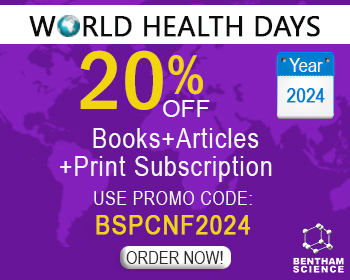Abstract
Honey bees provide many products exerting a wide range of benefits to humans. Honey, propolis, royal jelly, beeswax, bee venom, bee pollen and bee bread have been used as natural medicines since ancient times because of their therapeutic effects. These products have demonstrated healing properties against wounds, diabetes, gastrointestinal diseases, cancer, asthma, neurological diseases, bacterial and viral infections. The antibacterial and antibiofilm activity of honey bee products is widely studied, and a huge body of evidence supports it. On the other hand, their antiviral effect has not been extensively studied. However, recent research has demonstrated their potential against various viral infections including SARS-CoV-2. Hence, honey bee products could be alternatives to treat viral diseases, especially when there is no effective treatment available. This narrative review aims to present up-to-date data (including ongoing clinical trials) regarding the antiviral activity of honey bee products, aiming to elucidate how honey bee product supplementation contributes to antiviral treatment.
Keywords: Antiviral, bee products, honey, propolis, royal jelly, bee bread, pollen.
[http://dx.doi.org/10.1007/978-1-4020-6359-6_1376]
[http://dx.doi.org/10.1155/2015/172502] [PMID: 26697094]
[http://dx.doi.org/10.1155/2013/964149] [PMID: 23710243]
[http://dx.doi.org/10.5772/65477]
[http://dx.doi.org/10.4103/0974-8490.204647] [PMID: 28539734]
[http://dx.doi.org/10.3390/antibiotics8040251] [PMID: 31817375]
[http://dx.doi.org/10.3892/ijmm.2018.3656] [PMID: 29749429]
[http://dx.doi.org/10.1080/00218839.2019.1649570]
[http://dx.doi.org/10.1155/2018/8367846] [PMID: 29492183]
[http://dx.doi.org/10.3390/app11135801]
[http://dx.doi.org/10.1111/jam.13400] [PMID: 28066967]
[http://dx.doi.org/10.1016/j.peptides.2004.03.016] [PMID: 15203237]
[http://dx.doi.org/10.1002/mbo3.397] [PMID: 27743422]
[http://dx.doi.org/10.3892/mmr.2015.4275] [PMID: 26330195]
[http://dx.doi.org/10.3390/antibiotics10050555] [PMID: 34068740]
[http://dx.doi.org/10.3390/antibiotics9110811] [PMID: 33202560]
[http://dx.doi.org/10.1126/science.284.5418.1318]
[http://dx.doi.org/10.1155/2017/5163575] [PMID: 28127379]
[http://dx.doi.org/10.1038/s41598-019-54576-2] [PMID: 31796774]
[http://dx.doi.org/10.1155/2017/3191752] [PMID: 29075644]
[http://dx.doi.org/10.3390/antibiotics9120866] [PMID: 33291554]
[http://dx.doi.org/10.3390/antibiotics6040031] [PMID: 29186026]
[http://dx.doi.org/10.22038/IJBMS.2013.988] [PMID: 23997898]
[http://dx.doi.org/10.1016/j.foodchem.2015.09.051] [PMID: 26593496]
[http://dx.doi.org/10.1016/j.arcmed.2014.05.006] [PMID: 24880005]
[http://dx.doi.org/10.1016/j.coi.2011.07.016] [PMID: 21840185]
[http://dx.doi.org/10.1371/journal.pone.0108195]
[http://dx.doi.org/10.1080/14786419.2021.1880403] [PMID: 33550857]
[http://dx.doi.org/10.1016/j.jtcme.2018.05.003] [PMID: 31453119]
[http://dx.doi.org/10.47665/tb.38.1.008] [PMID: 33797523]
[PMID: 25860226]
[http://dx.doi.org/10.3823/434] [PMID: 22822475]
[http://dx.doi.org/10.5455/jabet.2021.d129]
[PMID: 15278008]
[http://dx.doi.org/10.1136/bmjopen-2018-026201] [PMID: 31092654]
[http://dx.doi.org/10.1016/j.amjoto.2018.09.007] [PMID: 30227969]
[http://dx.doi.org/10.3390/ph14121264] [PMID: 34959664]
[http://dx.doi.org/10.5455/ja.20160702011113]
[http://dx.doi.org/10.1101/2020.10.30.20217364]
[http://dx.doi.org/10.1186/s13063-021-05510-3] [PMID: 34526081]
[http://dx.doi.org/10.1155/2015/206439] [PMID: 26106433]
[http://dx.doi.org/10.1155/2013/308249] [PMID: 24382957]
[http://dx.doi.org/10.1016/j.jep.2005.05.045] [PMID: 16046088]
[http://dx.doi.org/10.1177/095632020801900102] [PMID: 18610553]
[http://dx.doi.org/10.1111/j.1365-2672.2009.04354.x] [PMID: 19457040]
[http://dx.doi.org/10.1007/s11356-019-07458-z] [PMID: 31889278]
[http://dx.doi.org/10.1691/ph.2018.8672] [PMID: 30522559]
[http://dx.doi.org/10.12659/MSM.897282] [PMID: 26856414]
[http://dx.doi.org/10.3851/IMP3383] [PMID: 33620334]
[http://dx.doi.org/10.1002/ptr.2868] [PMID: 19472427]
[http://dx.doi.org/10.1016/j.phymed.2009.07.006] [PMID: 19682876]
[http://dx.doi.org/10.1016/j.phymed.2014.04.026] [PMID: 25022206]
[http://dx.doi.org/10.1002/cbf.1810] [PMID: 22025285]
[http://dx.doi.org/10.1155/2018/7092416] [PMID: 30174714]
[http://dx.doi.org/10.1016/j.cvsm.2008.02.007] [PMID: 18501278]
[http://dx.doi.org/10.1007/s00203-021-02351-1] [PMID: 33950349]
[http://dx.doi.org/10.1016/j.medidd.2020.100039] [PMID: 32313880]
[http://dx.doi.org/10.1016/j.biopha.2020.110622] [PMID: 32890967]
[http://dx.doi.org/10.14293/S2199-1006.1.SOR-.PPZR1OD.v1]
[http://dx.doi.org/10.1016/j.biopha.2021.111526] [PMID: 34311528]
[http://dx.doi.org/10.1002/ptr.7116] [PMID: 33860587]
[http://dx.doi.org/10.1186/s13063-020-04934-7] [PMID: 33272309]
[http://dx.doi.org/10.18502/tim.v6i4.8269]
[http://dx.doi.org/10.1016/j.phymed.2020.153368] [PMID: 33091857]
[http://dx.doi.org/10.3390/ijms20194662] [PMID: 31547049]
[http://dx.doi.org/10.1016/j.ijbiomac.2019.09.080] [PMID: 31520705]
[http://dx.doi.org/10.1016/j.jff.2020.104282] [PMID: 33199981]
[http://dx.doi.org/10.3389/fphar.2017.00412] [PMID: 28701955]
[http://dx.doi.org/10.3390/molecules24162997] [PMID: 31430861]
[http://dx.doi.org/10.1007/s12275-016-6376-1] [PMID: 27888461]
[http://dx.doi.org/10.21608/jesp.2015.89742] [PMID: 26012234]
[http://dx.doi.org/10.1016/j.apjtm.2016.07.003] [PMID: 27633295]
[http://dx.doi.org/10.3390/antiox8120568] [PMID: 31756937]
[http://dx.doi.org/10.55251/jmbfs.4859]
[http://dx.doi.org/10.1055/s-0041-111631] [PMID: 26848705]


























